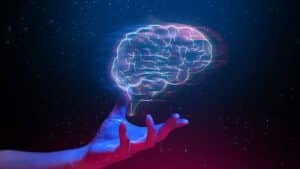Sign-Up For The NeuroGym Newsletter And Join The Innercise Revolution!
We value your privacy and would never spam you.
Brain Discoveries
New brain discoveries are being made every year in the field of neuroscience. The brain is the organ that keeps us working the way we should be, and the study of the brain is incredibly important. Here’s why we need to know our brains and some cool new discoveries.
There is an irony to the fact that while we engage our brains to try and find answers to the great questions in life, we actually haven’t fully figured out an awful lot about our own brains! Even so, we’ve come a very long way in getting to know our brains (or rather, our brains getting to know themselves), and when you look back in history, scientists and philosophers have long been trying to uncover the secrets of our bodies’ supercomputers. Way back in the time of Greek philosophers and Roman physicians, there were several interesting theories posited about the brain, and from the time of our ancient forebears up until now, we’ve made many milestones in neuroscience, the study of the brain.
You may be saying to yourself, “Neuroscience sounds tricky. Why do I need to learn about my brain anyway?” and you may wish to remain blissfully unaware of the inner workings of your brain. It may seem like as long as your brain keeps working, you don’t have to worry about how it’s working, but that’s the issue; the brain doesn’t always work as it should!
There are many conditions that impact the brain. For example, autoimmune diseases, in which the body’s defense mechanism attacks the brain; mental illnesses, which can negatively impact daily functioning and quality of life; and neurodevelopmental conditions. Sometimes, people are born with these conditions, but they can also develop over time. Many people develop dementia in their old age, which leads to drastically impaired memory and decision making skills. Another brain disease that can develop as we age is Parkinson’s disease, a degenerative disease that reduces mobility. Individuals can develop mental disorders brought on by brain damage and post-traumatic stress disorder. As we can see, even if we have a fairly healthy brain when we start out in life, sometimes, things can change.
The more we learn about the brain, the more we can do to help treat the various illnesses that can take hold of us and impair our physical mobility, mental health, intellectual capability, and overall bodily well-being. The brain is the hub of our bodies and it controls everything! So, the more we learn about it, the more we can learn about ourselves.
Being part of the central nervous system, the brain has a say in every other part of our bodies. The brain controls what hormones we produce, as well as controlling how we interpret sensory information which allows us to respond to the world around us. If the brain doesn’t work right, we don’t work right, so we really need it to work right!
For as much as we know about the brain, there are some common misconceptions that many people believe to be true but that are just plain wrong! For example:
Now that we’ve debunked those myths, let’s learn about the parts of the brain.
As part of the central nervous system, the brain contains an outer region of gray matter that surrounds an inner region of white matter. This white and gray matter make up the three main parts of the brain: the cerebrum, the cerebellum, and the brainstem. The cerebrum is the largest part of the brain. The cerebral cortex is the outer part of the cerebrum and is divided into two hemispheres. In between the two hemispheres is the corpus callosum, a nerve bundle that allows the two hemispheres to exchange information. The cerebrum has different areas which handle functions such as initiating movement, forming emotions, problem-solving, and speech. The cerebellum is at the back of the head, and also has two hemispheres. It’s involved in balance and coordinating voluntary muscle movement. The brainstem connects the cerebrum to the spinal cord and is made up of the midbrain, the pons, and the medulla.

As we said earlier, we’re still trying to find out a lot about how our brains work. We are, however, making progress and learning new things every year. Here are five recent brain discoveries scientists have found.
We learn more and more about the brain with every bit of research conducted, so who knows what other brain discoveries we’ll make by the end of the year!
Neuroscience is an exciting field with progress being made constantly. The more we learn about the brain, the better we can understand how we, as humans, work. It’s important we continue to make new brain discoveries and use our brains to learn more about themselves!

NeuroGym Team: NeuroGym’s Team of experts consists of neuroscientists, researchers, and staff who are enthusiasts in their fields. The team is committed to making a difference in the lives of others by sharing the latest scientific findings to help you change your life by understanding and using the mindset, skill set and action set to change your brain.
We value your privacy and would never spam you.